Indigenous
Indigenous Catholic Priest questions “The murder of 215 Indigenous Children” at Kamloops Indian Residential School
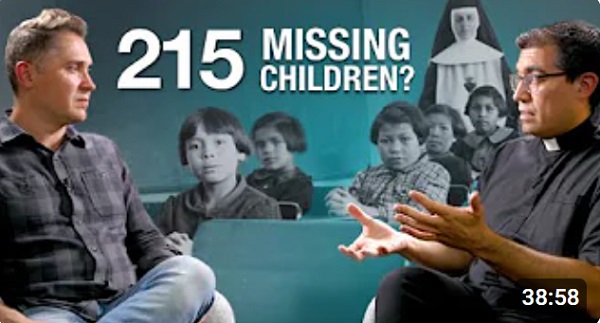
From the podcast Catholic Minute With Ken & Janelle
Indigenous Catholic priest, Fr. Cristino Bouvette, speaks to the report of the 215 missing children first released in 2021 and what we know today.
On May 27, 2021, the Kamloops Indian Band announced that ground-penetrating radar had detected the remains of 215 “missing children” at the site of a former residential school. The media quickly picked up the story, with headlines proclaiming the discovery of “mass graves.” Social media exploded. Churches were vandalized, and some were set on fire. Catholic Bishops issued apologies. But was it true?
Fr. Cristino Bouvette, a Catholic priest with Indigenous heritage, brings clarity to the controversy.
Full statement of first statement by Kamloops Indian Band, on May 2021 https://tkemlups.ca/wp-content/upload…
Updated Statement: May, 2024 on 215 anomalies were detected https://tkemlups.ca/offices-closed-on…
Canada mourns as remains of 215 children found at indigenous school https://www.bbc.com/news/world-us-can…
Kamloops Indian Residential School Mass Graves: No Bodies Found Despite $8 Million Probe https://www.msn.com/en-in/news/India/…
Terry Glavin: Canada slowly acknowledging there never was a ‘mass grave’ https://nationalpost.com/opinion/terr…
Please consider supporting our work here: https://kenandjanelle.com/
Canadian Energy Centre
Saskatchewan Indigenous leaders urging need for access to natural gas

Piapot First Nation near Regina, Saskatchewan. Photo courtesy Piapot First Nation/Facebook
From the Canadian Energy Centre
By Cody Ciona and Deborah Jaremko
“Come to my nation and see how my people are living, and the struggles that they have day to day out here because of the high cost of energy, of electric heat and propane.”
Indigenous communities across Canada need access to natural gas to reduce energy poverty, says a new report by Energy for a Secure Future (ESF).
It’s a serious issue that needs to be addressed, say Indigenous community and business leaders in Saskatchewan.
“We’re here today to implore upon the federal government that we need the installation of natural gas and access to natural gas so that we can have safe and reliable service,” said Guy Lonechild, CEO of the Regina-based First Nations Power Authority, on a March 11 ESF webinar.
Last year, 20 Saskatchewan communities moved a resolution at the Assembly of First Nations’ annual general assembly calling on the federal government to “immediately enhance” First Nations financial supports for “more desirable energy security measures such as natural gas for home heating.”
“We’ve been calling it heat poverty because that’s what it really is…our families are finding that they have to either choose between buying groceries or heating their home,” Chief Christine Longjohn of Sturgeon Lake First Nation said in the ESF report.
“We should be able to live comfortably within our homes. We want to be just like every other homeowner that has that choice to be able to use natural gas.”
At least 333 First Nations communities across Canada are not connected to natural gas utilities, according to the Canada Energy Regulator (CER).
ESF says that while there are many federal programs that help cover the upfront costs of accessing electricity, primarily from renewable sources, there are no comparable ones to support natural gas access.
“Most Canadian and Indigenous communities support actions to address climate change. However, the policy priority of reducing fossil fuel use has had unintended consequences,” the ESF report said.
“Recent funding support has been directed not at improving reliability or affordability of the energy, but rather at sustainability.”
Natural gas costs less than half — or even a quarter — of electricity prices in Alberta, British Columbia, Ontario, Manitoba and Saskatchewan, according to CER data.
“Natural gas is something NRCan [Natural Resources Canada] will not fund. It’s not considered a renewable for them,” said Chief Mark Fox of the Piapot First Nation, located about 50 kilometres northeast of Regina.
“Come to my nation and see how my people are living, and the struggles that they have day to day out here because of the high cost of energy, of electric heat and propane.”
According to ESF, some Indigenous communities compare the challenge of natural gas access to the multiyear effort to raise awareness and, ultimately funding, to address poor water quality and access on reserve.
“Natural gas is the new water,” Lonechild said.
Economy
CANADA MUST REVIVE A “PIPELINE WEST” – Indigenous Ownership and Investment in Energy Projects are Critical to Canada’s Oil Customer Diversification
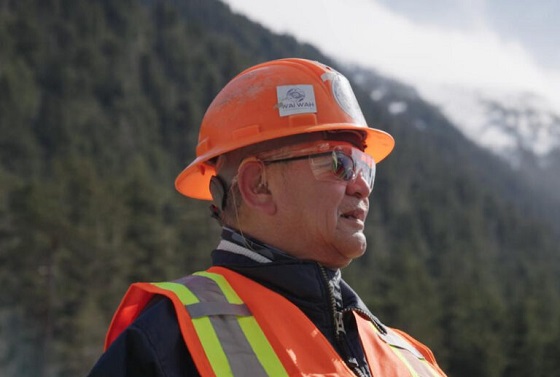
From EnergyNow.Ca
Interesting events renewed discussions around pipeline projects when Alberta Premier, Daniel Smith made social media comments on Jan 21.2025 that Canada should have more nation-building projects and revive Northern Gateway.
It inspired an immediate comment from the President of the Union of BC Indian Chiefs, Grand Chief Stewart Phillip expressing interest in reviving the project. “If we don’t build that kind of infrastructure, Trump will,” Phillip said. “And there won’t be any consideration for the environment, for the rule of law… I think we can do better.”
The next day, Chief Phillip retracted the comment leaving questions about the 180-degree pivot.
Some proponents of Indigenous development, like Calvin Helin, a member of the Tsimshian Nation and Principal at INDsight Advisers, a lawyer who specializes in commercial and Indigenous law and best-selling author, thought the event raised questions about influence.
“Environmental groups have infiltrated some Indigenous organizations,” Helin said in an interview. “They managed to support a government that championed their agendas, particularly agendas involving Alberta – objectives like the coastal pipeline ban and changes to the regulatory approval system. In this era of Trump, all they’ve managed to do is to weaken Canada’s position.”
Helin stressed that in 2025, the energy industry clearly understands the mandate to deal seriously with Indigenous interests, with Indigenous leaders coming forward to support natural resource development while respecting the environment. He suggested that Indigenous inclusion and recognition at the outset is essential for energy projects in 2025 and beyond.
Back in 2018-2019, Helin proposed the Eagle Spirit Corridor a $50 -billion First Nations majority-owned Canadian four pipeline corridor after the Northern Gateway Pipeline was under consideration.
Helin had consulted early with Indigenous groups and proposed a robust natural resource corridor from Bruderheim, AB to Grassy Point, BC. The project involved the support of 32 First Nations from the outset. A variety of shared services were proposed to make the corridor more economical than a pipeline. Helin expected the project would create tens of thousands of jobs over the long term, as well as generate tax revenue and royalties, but it was killed by the federal government’s Bill C-48 tanker ban which stopped companies from using terminals along BC’s north coast to ship oil. The project was ultimately abandoned.
The Enbridge Northern Gateway Pipeline project for a twin pipeline from Bruderheim, AB, to Kitimat, BC, was also stopped by Bill C-48. Both Eagle Spirit and Northern Gateway chose the north BC coast for transportation to Asian markets for the deeper waters that could accommodate larger-capacity crude oil tankers.
The routes of the Eagle Spirit and Northern Gateway pipelines/corridors are quite similar with Eagle Spirit’s route extending a bit farther north in the final leg, as in the maps below.


Recent threats of tariffs on Canadian imports made by U.S. President Trump have stimulated calls to revive pipeline projects to tidewater, including Northern Gateway.
In direct reference to Northern Gateway, Enbridge CEO Greg Ebel has stated to media that Canada would have to designate major pipeline projects as legally required “in the national interest” before companies will consider investing again.
After the cancellation of Northern Gateway, Dale Swampy,the Indigenous leader who helped to establish the Northern Gateway Aboriginal Equity Partners group (AEP), formed the National Coalition of Chiefs(NCC), a group of pro-development First Nation Chiefs who advocate for the development of oil and gas resources in their communities.
Dale Swampy, President of the NCC says it still makes good sense to get a pipeline devoted to bitumen to the West Coast and that Canada has been “putting all its eggs in one basket” for 50 years and has been selling to just one customer while “everybody else in the oil industry, including the U.S., is getting into the global competitive market.”
The Canadian Energy Centre reports that the oil and gas industry is not going into decline over the next decade and in fact, the demand for oil and gas in emerging and developing economies will remain robust through 2050. In light of the multiple effects of U.S. tariffs, Canadian pipelines to tidewater are seen as urgent. Swampy advocates for policy change and the revival of the Northern Gateway project powered by Indigenous equity investment.
“First, we have got to get rid of the oil tanker ban (C-48),” Swampy said. “We’ve got to get more fluid regulatory processes so that we can get projects built in a reasonable timeline so that it doesn’t cost us billions more, waiting for the regular regulatory process to be complete- like TMX. You’ve also got to get the proponents back to the table. We had 31 of the 40 communities already signed on last time. I believe that we can get them signed on again.”
He continues to work with industry to develop an Indigenous-led bitumen pipeline project to the west coast. “We can get this project built if it’s led by First Nations.”
He says other Indigenous leaders are starting to realize the benefits of cooperating with natural resource development, whether it’s mining or the BC LNG projects that he says are now more widely accepted by First Nations.
Stephen Buffalo, President and CEO of the Indian Resource Council of Canada (IRC) agrees.
“I talk about ripple effects,” Buffalo said. “When Jason Kenney was Premier of Alberta, and the Trans Mountain expansion was a big discussion, he wanted to ensure that First Nations had an opportunity to be some sort of equity owner in projects. With the lack of investment capital, he created the Alberta Indigenous Opportunities Corporation with the province as a government backstop.”
Buffalo says the IRC has assembled just over $800 million in government backstop for First Nations to participate in projects which found strong proponents. And those projects are related to natural resource development. He acknowledged that some communities – some of them in BC, don’t see the big picture of what Indigenous Opportunities Corporations can allow them to do.
“You shouldn’t get in the way of others that really need access to healthcare and education and want to develop their communities. I always tell people, our land base, that we were given under the Indian Act, isn’t changing what our populations are. We need housing, and we need the infrastructure, which includes clean water.”
He sees the urgent need for First Nations to get out of poverty and alliances to develop natural resources are key.
“ When we landlock our resources, the U.S. economy seems to get better. Now we’re dependent on the U.S. We have to send our oil to the U.S. at a huge discount. Could or should we have Northern Gateway? Absolutely. Should we have Energy East? Absolutely. We’re importing oil, but we have it at home. Why do we need to import it?”
Buffalo agreed that project discussions and regulations have huge value, but the slowness of the discussion, including pushback from environmental groups that influence discussions is negatively impacting First Nation development. In the case of regulations like Bill C-59, the anti-greenwashing bill, Buffalo says it has silenced many of the members of the Indian Resource Council.
“I’m just looking after our communities,” Buffalo says, “the ones that are never written about, talked about, the ones that don’t have clean water, that don’t have adequate housing, that are lacking education foundations, that are lacking good health care. When government regulatory bodies are making decisions, they’re making decisions for those people that they don’t ever see or ever talk to.”
My discussions with Calvin Helin, Stephen Buffalo and Dale Swampy resulted in a few policy suggestions for 2025 and beyond.
- Repeal Bill C- 69 – It not only blocks all pipelines but stops mines, refineries, export plants and other energy infrastructure that First Nations want to invest in. C-69 is unconstitutional- as ruled on October 13.2023 by Canada’s top court.
- Cut Taxes in Response to U.S. Tariffs– Tax cuts on investment and energy can neutralize the cost of the tariffs with lower taxes and incentivize investment in Canadian projects. Eliminate the Carbon Tax- Carbon tax elimination has been popular with First Nation leaders who have stated the tax has put us at a strategic disadvantage to other countries.
- Repeal Bill C-59, the anti-green-washing bill, which according to Stephen Buffalo has silenced many of the members of the Indian Resource Council and Bill C-48 – the Tanker Ban.
- Greenlight LNG Plants and related infrastructure– Canada sells gas exports uniquely to the U.S. There is a strong business case for sales to Asian and European markets. In a recent Canadian Energy Ventures webcast it was revealed that Natural Gas is sold as LNG to Europe at 16X the price Canada sells its gas to the U.S. First Nations are successfully involved in Woodfibre LNG, Cedar LNG and Ksi Lisims LNG in BC.
- Cut Regulatory Delay & Speed Up Approvals – Delay undermines investor confidence that projects can be completed in reasonable timelines.
- Reconciliation– Issue clear guidelines on what constitutes meaningful consultation. Industry can treat Indigenous peoples as partners and continue to advance economic reconciliation, including equity partnerships.
Maureen McCall is an energy professional who writes on issues affecting the energy industry.
-

 2025 Federal Election2 days ago
2025 Federal Election2 days agoHarper Endorses Poilievre at Historic Edmonton Rally: “This Crisis Was Made in Canada”
-
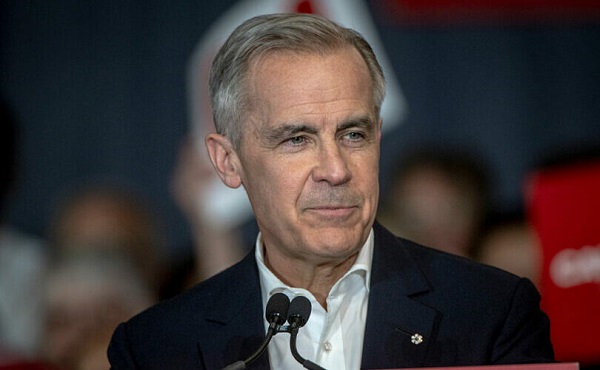
 2025 Federal Election2 days ago
2025 Federal Election2 days agoMark Carney’s radical left-wing, globalist record proves he is Justin Trudeau 2.0
-
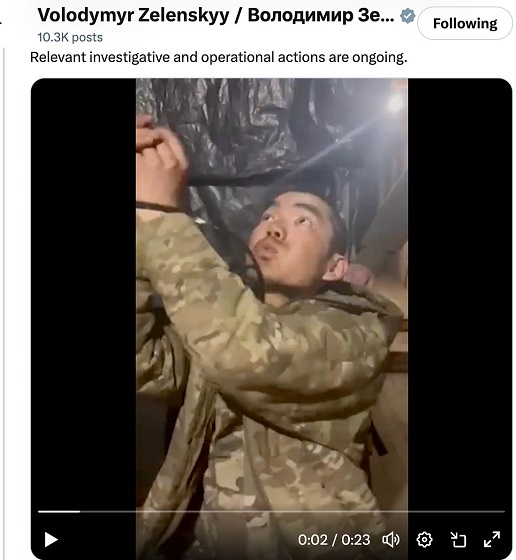
 conflict2 days ago
conflict2 days agoZelensky Alleges Chinese Nationals Fighting for Russia, Calls for Global Response
-

 2025 Federal Election2 days ago
2025 Federal Election2 days agoAn In-Depth Campaign Trail “Interview” With Pierre Poilievre
-

 2025 Federal Election21 hours ago
2025 Federal Election21 hours agoConservative Party urges investigation into Carney plan to spend $1 billion on heat pumps
-
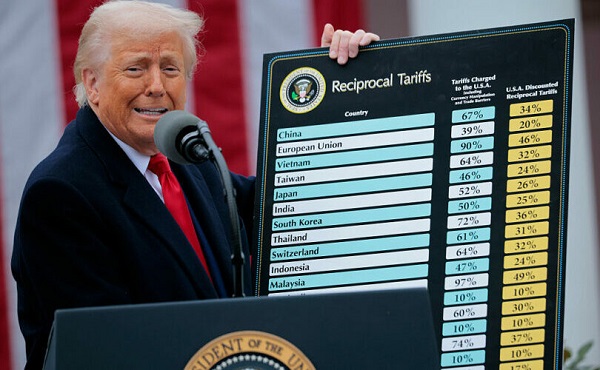
 Business2 days ago
Business2 days agoTrump’s tariff plan replaces free trade with balanced trade. Globalists hate that.
-
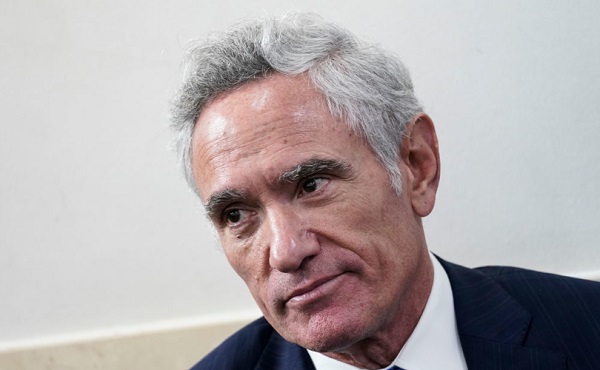
 Censorship Industrial Complex2 days ago
Censorship Industrial Complex2 days agoScott Atlas: COVID lockdowns, censorship have left a ‘permanent black mark on America’
-

 2025 Federal Election2 days ago
2025 Federal Election2 days agoDon’t double-down on net zero again




